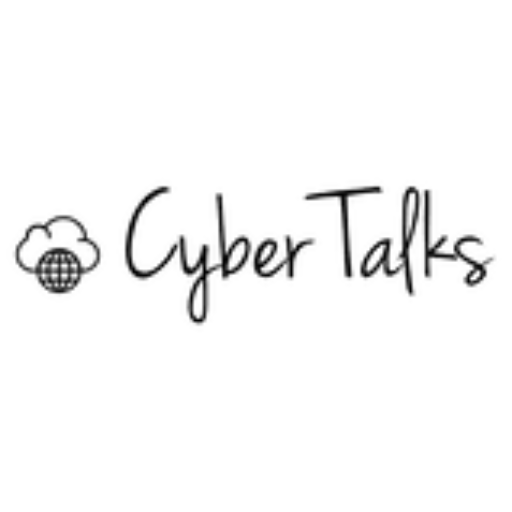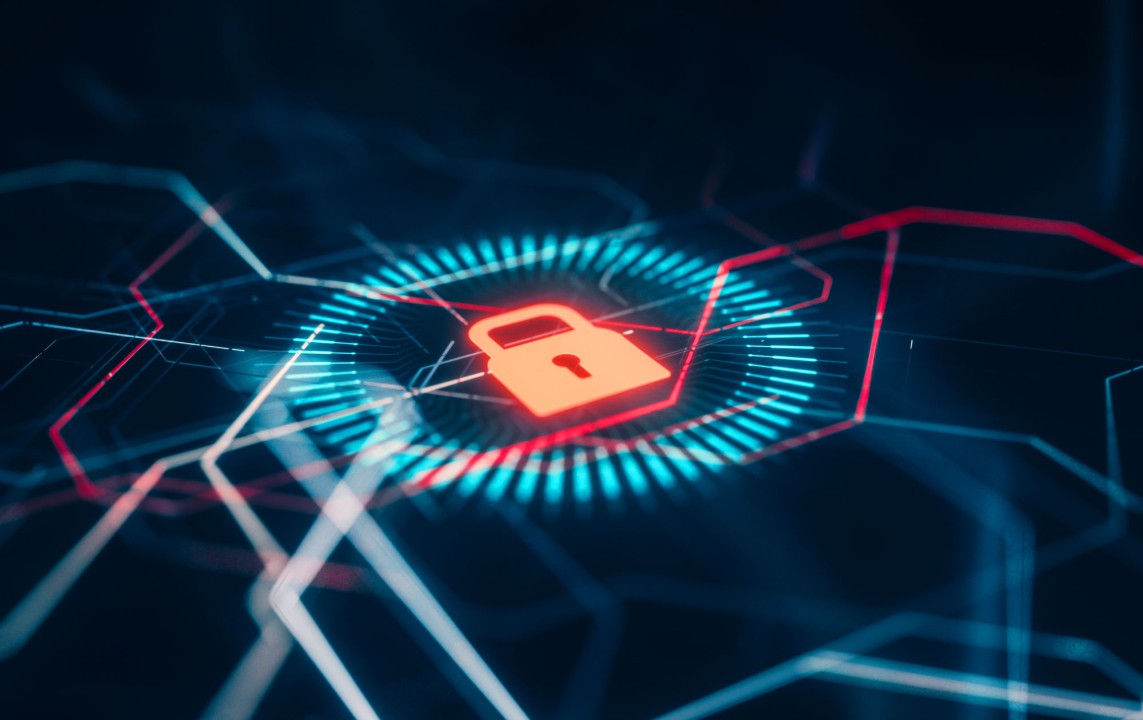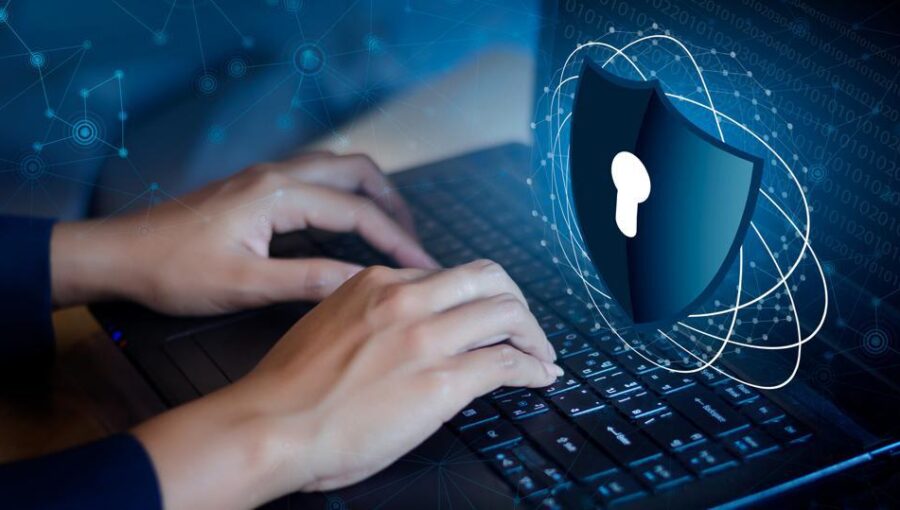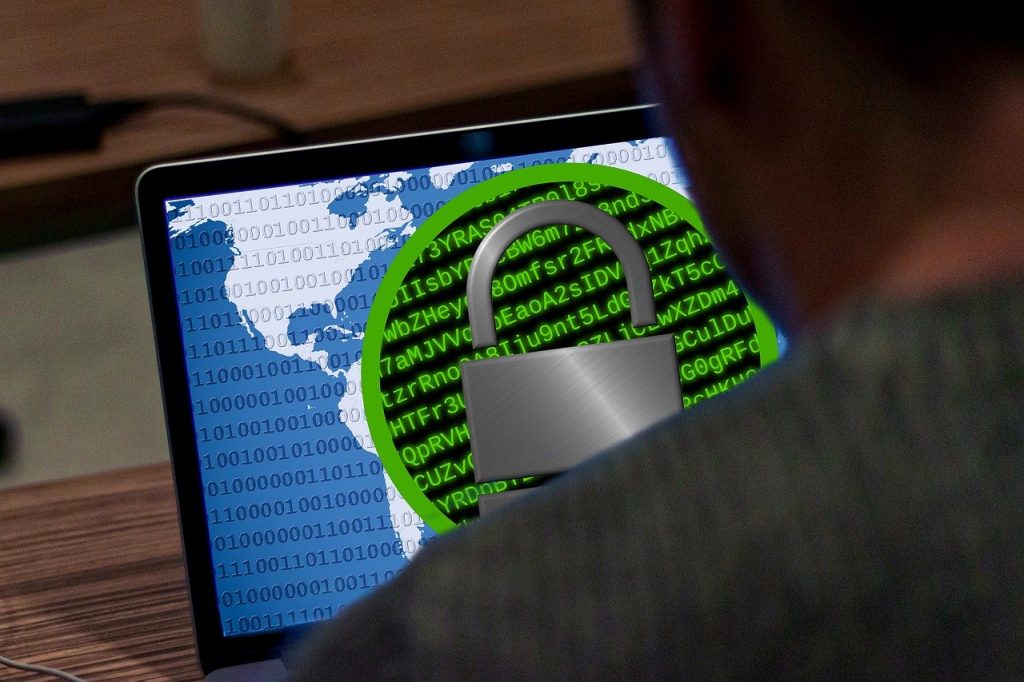
Cybersecurity In The Healthcare Sector: Safeguarding Patient Information
Role Of Cybersecurity In Life:
Cybersecurity plays a crucial role in our lives, safeguarding our digital world from various threats. In an increasingly interconnected society, it protects our personal information, financial transactions, and confidential data from unauthorized access, fraud, and cyber attacks. It ensures the privacy and integrity of our online communications, securing our identities and digital assets.
Cybersecurity also extends to critical infrastructure, such as power grids and healthcare systems, preventing potential disruptions and ensuring public safety. As we rely more on technology, the role of cybersecurity becomes paramount, fostering trust and confidence in our digital interactions and preserving the stability and resilience of our digital ecosystem.
Implementing Cybersecurity In Healthcare Sector:
In the digital age, the healthcare sector has embraced technology to improve patient care, streamline operations, and enhance efficiency. However, this digital transformation also brings with it increased vulnerabilities and risks, making robust cybersecurity measures essential.
This article explores the crucial role of cybersecurity in the healthcare sector, highlighting its significance in protecting patient data, ensuring operational continuity, preventing ransomware attacks, enabling secure telehealth services, promoting medical device security, and fostering trust and confidence among patients.
Protecting Patient Data:
Patient data is a valuable asset in healthcare, containing sensitive information such as medical records, personal identifiers, and financial details. Cybersecurity measures like encryption, access controls, and secure data storage help protect this data from unauthorized access, breaches, and identity theft.
By safeguarding patient data, cybersecurity maintains patient privacy, ensures compliance with data protection regulations like HIPAA, and mitigates the risk of reputational damage to healthcare organizations.
Ensuring Operational Continuity:
In the healthcare sector, any disruption to systems and networks can have severe consequences for patient care. Cybersecurity measures, such as regular backups, disaster recovery plans, and network monitoring, help ensure operational continuity. These measures enable swift response and recovery in case of cyber attacks, minimizing downtime and ensuring uninterrupted access to critical patient services.
Preventing Ransomware Attacks:
Ransomware attacks have become a significant concern for the healthcare sector. Malicious actors can encrypt healthcare systems, holding them hostage until a ransom is paid. Robust cybersecurity protocols, including regular software updates, employee education, and strong authentication measures, help prevent such attacks.
Additionally, implementing robust backup systems and offline data storage can mitigate the impact of ransomware attacks, minimizing disruption to patient care.
Enabling Secure Telehealth Services:
Telehealth services have gained immense popularity, particularly during the COVID-19 pandemic. Cybersecurity is crucial in enabling secure telehealth consultations and protecting patient privacy during virtual appointments.
Implementing secure video conferencing platforms, encrypting patient data during transmission, and ensuring secure access to telehealth platforms are vital cybersecurity measures that build trust among patients and healthcare providers.
Promoting Medical Device Security:
With the rise of the Internet of Things (IoT) devices in healthcare, the security of medical devices has become a critical concern. Connected devices such as pacemakers, insulin pumps, and imaging systems can be potential targets for cyber attacks.
Cybersecurity protocols, including device authentication, regular patching, and network segmentation, help protect medical devices from unauthorized access and manipulation, ensuring patient safety and the integrity of medical procedures.
Securing Electronic Health Records (EHRs):
Electronic Health Records (EHRs) have revolutionized patient care, providing healthcare professionals with quick access to comprehensive patient information. Cybersecurity plays a pivotal role in securing EHRs by implementing access controls, encryption, and audit trails.
By protecting EHRs from unauthorized modification, theft, or loss, cybersecurity ensures the accuracy, confidentiality, and availability of patient information, enabling quality healthcare delivery.
Mitigating Insider Threats:
Insider threats, such as employees with malicious intent or those who inadvertently compromise security, pose a significant risk to healthcare organizations. Cybersecurity measures like role-based access controls, user monitoring, and employee awareness programs help mitigate insider threats. By implementing robust protocols and fostering a security-conscious culture, healthcare organizations can minimize the risk of insider-related data breaches.
Enhancing Incident Response Capabilities:
The healthcare sector must have robust incident response capabilities to swiftly detect, reply to, and recover from cyber-attacks. Cybersecurity frameworks that outline incident response protocols, including incident reporting, communication channels, and remediation procedures, help healthcare organizations effectively manage cybersecurity incidents.
Regular testing and updating of the incident response plans ensure readiness to handle emerging threats and vulnerabilities.
Collaborating for Threat Intelligence Sharing:
Collaboration and information sharing among healthcare organizations, government agencies, and cybersecurity professionals are crucial in combating evolving cyber threats. Sharing threat intelligence and best practices helps healthcare organizations stay updated on emerging threats, vulnerabilities, and effective defence strategies.
Collaborative efforts also aid in the development of industry-wide cybersecurity standards and guidelines, ensuring a collective defence against cyber attacks.
Building Patient Trust and Confidence:
Cybersecurity plays a pivotal role in fostering trust and confidence among patients. Patients need assurance that their personal and medical information is secure and protected. By implementing robust cybersecurity measures, healthcare organizations demonstrate their devotion to patient privacy and data security.
This, in turn, enhances patient trust, promotes patient engagement, and strengthens the overall reputation of the healthcare sector.
How Cybersecurity Protects Patient Information in the Healthcare Sector?
In the healthcare sector, the protection of patient information is of paramount importance. With the increasing digitization of medical records and the adoption of electronic health systems, robust cybersecurity measures are crucial in safeguarding sensitive patient data.
This article examines how cybersecurity helps in protecting patient information in the healthcare sector, highlighting its role in securing electronic health records, implementing access controls, encrypting data, conducting regular risk assessments, promoting employee awareness, ensuring compliance with data protection regulations, and facilitating incident response and recovery.
Securing Electronic Health Records (EHRs):
Electronic Health Records (EHRs) store comprehensive patient information, making them an attractive target for cybercriminals. Cybersecurity measures such as encryption, strong authentication, and data integrity checks help secure EHRs from unauthorized access, ensuring the confidentiality and privacy of patient data. By employing advanced encryption algorithms, healthcare organizations can render patient data unreadable to unauthorized individuals, mitigating the risk of data breaches.
Implementing Access Controls:
Effective access controls play a vital role in protecting patient information from unauthorized access. Healthcare organizations employ role-based access controls (RBAC) to ensure that only permitted personnel can access specific patient data. RBAC assigns user roles and permissions based on job responsibilities, limiting access to sensitive information to only those who require it.
By implementing access controls, healthcare organizations can prevent unauthorized individuals from accessing or manipulating patient data, safeguarding its confidentiality and integrity.
Encrypting Data:
Encryption is a powerful cybersecurity tool that transforms sensitive patient data into unreadable ciphertext. Healthcare organizations employ encryption techniques to protect patient information during transmission and storage. Encrypting data ensures that even if an attacker gains unauthorized access, the information remains inaccessible without the encryption key.
By employing strong encryption algorithms, healthcare organizations can significantly decrease the risk of data breaches and maintain the privacy of patient information.
Conducting Regular Risk Assessments:
Regular risk assessments are essential to identify vulnerabilities and potential threats to patient information. Cybersecurity professionals in healthcare organizations perform comprehensive risk assessments to evaluate the security posture of systems, networks, and applications.
By identifying vulnerabilities and assessing their potential impact, healthcare organizations can implement necessary security controls and measures to mitigate risks, ensuring the protection of patient information.
Promoting Employee Awareness:
Employees play a critical role in maintaining the security of patient information. Cybersecurity training and awareness programs help educate employees about their responsibilities in safeguarding patient data. These programs cover topics such as password security, phishing awareness, social engineering, and data handling practices.
By promoting a culture of cybersecurity awareness, healthcare organizations empower their employees to identify and report potential threats, minimizing the risk of data breaches.
Ensuring Compliance with Data Protection Regulations:
Healthcare organizations must adhere to stringent data protection regulations, such as (HIPAA) in the United States. Cybersecurity measures ensure compliance with these regulations, which include requirements for patient data security, privacy, and breach notification.
By implementing cybersecurity controls that align with regulatory requirements, healthcare organizations demonstrate their commitment to protecting patient information and avoiding legal and reputational consequences.
Facilitating Incident Response and Recovery:
Despite robust preventive measures, healthcare organizations may still experience cybersecurity incidents. In such cases, a well-defined incident response plan is crucial. Cybersecurity professionals develop incident response plans that outline procedures for detecting, reporting, and mitigating incidents.
These plans include steps for isolating affected systems, preserving evidence, and initiating recovery processes. By promptly responding to incidents, healthcare organizations can minimize the impact on patient information and restore normal operations efficiently.
Monitoring and Intrusion Detection:
Continuous monitoring and intrusion detection systems are essential components of cybersecurity in healthcare. These systems monitor networks and systems for suspicious activities or unauthorized access attempts. Intrusion detection alerts administrators to potential breaches, enabling swift action to prevent further compromise.
By proactively monitoring for security incidents, healthcare organizations can quickly respond to potential threats, protecting patient information from unauthorized access or exfiltration.
Implementing Multi-Factor Authentication:
Multi-factor authentication (MFA) adds an extra layer of security to patient information access. MFA requires users to give multiple pieces of evidence, such as a password, a security token, or biometric data, to gain access to sensitive data. By implementing MFA, healthcare organizations reduce the risk of unauthorized access, as an attacker would require more than just a password to compromise patient information.
Regular Software Updates and Patch Management:
Keeping software and systems up to date with the new security patches is crucial in maintaining a secure environment for patient information. Vulnerabilities in software can be exploited by attackers to gain unauthorized access or compromise systems. Regular software updates and patch management ensure that healthcare organizations have the latest security fixes, reducing the risk of exploitation and protecting patient data from potential threats.
Conclusion:
In conclusion, cybersecurity plays a critical role in the healthcare sector by safeguarding patient information. With the increasing digitization of medical records and the rise of cyber threats, robust cybersecurity measures are essential to protect sensitive data from unauthorized access, breaches, and data loss.
Through secure electronic health records, access controls, encryption, regular risk assessments, employee awareness programs, regulatory compliance, and effective incident response, healthcare organizations can ensure the confidentiality, integrity, and availability of patient details. By prioritizing cybersecurity, the healthcare sector can maintain patient trust, comply with data protection regulations, and uphold the highest standards of patient care in the digital age.
FAQs:
What are the key cybersecurity threats facing the healthcare sector?
The healthcare sector faces various cybersecurity threats, including ransomware attacks, phishing attempts, insider threats, and unauthorized access. These threats can compromise patient information, disrupt operations, and lead to financial losses.
How can healthcare organizations protect patient information from cyber threats?
Healthcare organizations can protect patient information by implementing robust cybersecurity measures such as encryption, access controls, regular risk assessments, employee awareness programs, and incident response plans. These measures help prevent unauthorized access and data breaches and ensure prompt detection and response to potential threats.
What is the role of employee training in healthcare cybersecurity?
Employee training plays a crucial role in healthcare cybersecurity. By educating employees about best practices, password security, phishing awareness, and data handling protocols, healthcare organizations can empower their staff to recognize and report potential threats. Well-trained employees become a line of defence against cyber attacks, safeguarding patient information.
How does regulatory compliance impact cybersecurity in healthcare?
Regulatory compliance, such as HIPAA in the United States, sets guidelines and requirements for protecting patient information. Healthcare organizations must adhere to these regulations to ensure the privacy and security of data of patients. Compliance involves implementing appropriate cybersecurity controls, conducting risk assessments, and promptly reporting any data breaches.
Why is incident response important in healthcare cybersecurity?
Incident response is crucial in healthcare cybersecurity to effectively manage and lighten the impact of cyber incidents. A well-defined incident response plan allows healthcare organizations to quickly detect, contain, and respond to cybersecurity incidents, minimizing damage to patient information and enabling swift recovery. Incident response ensures a proactive and organized approach to cybersecurity incidents.



